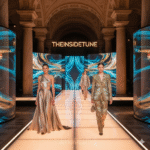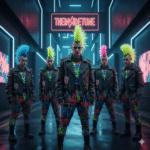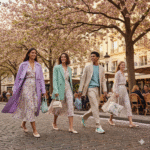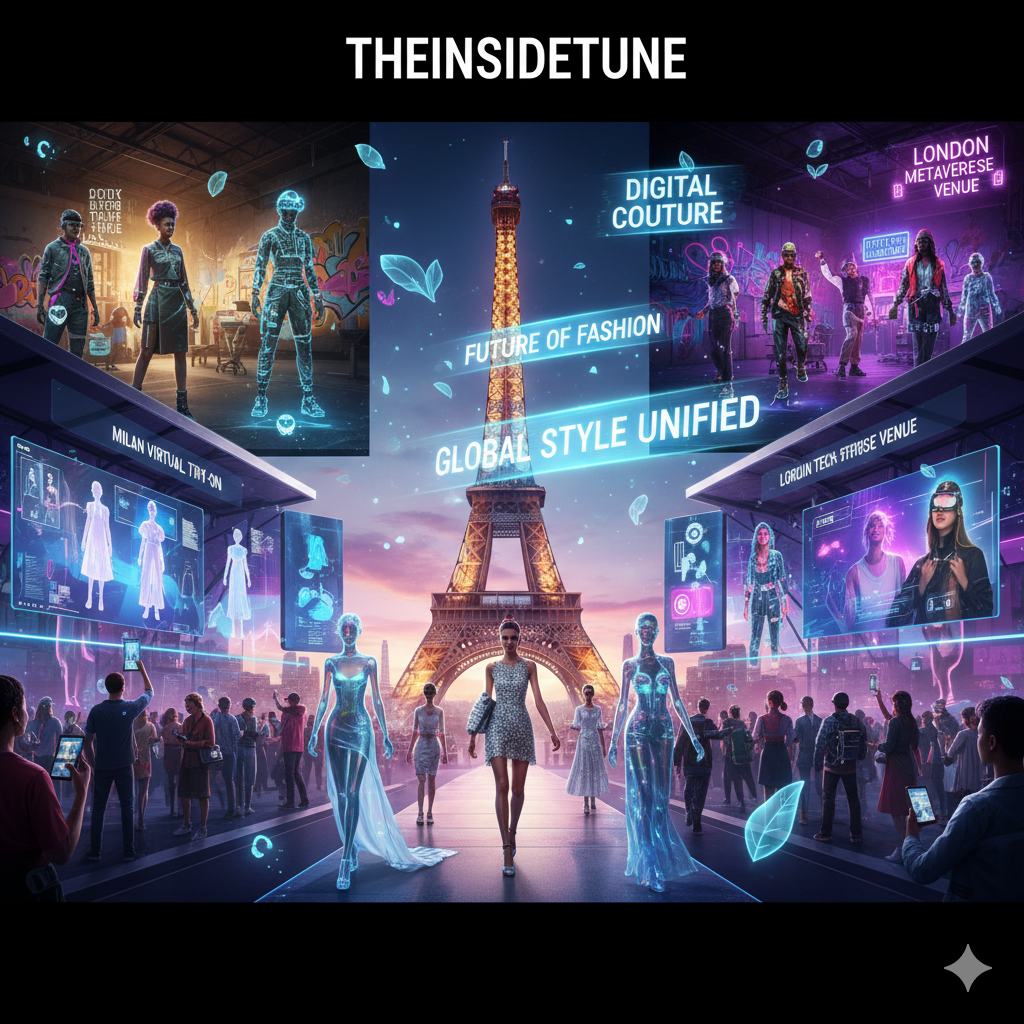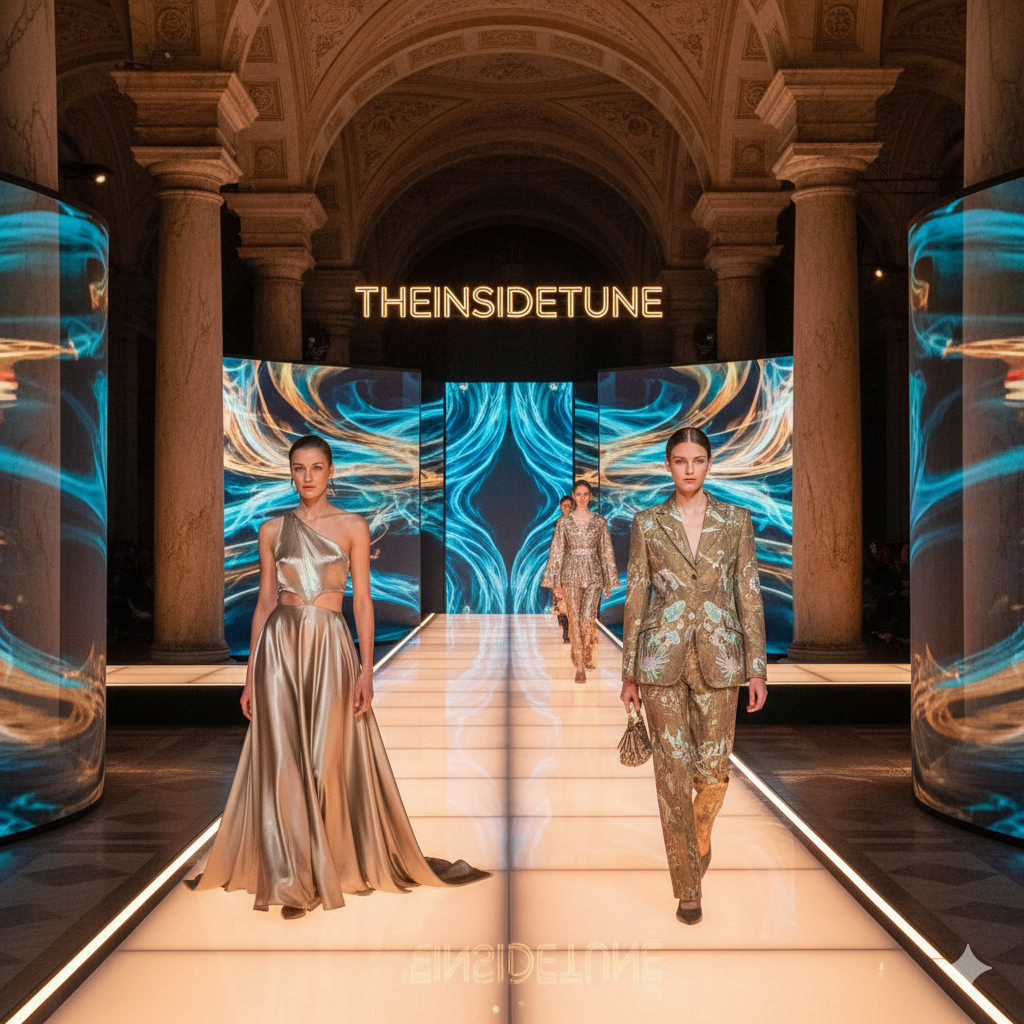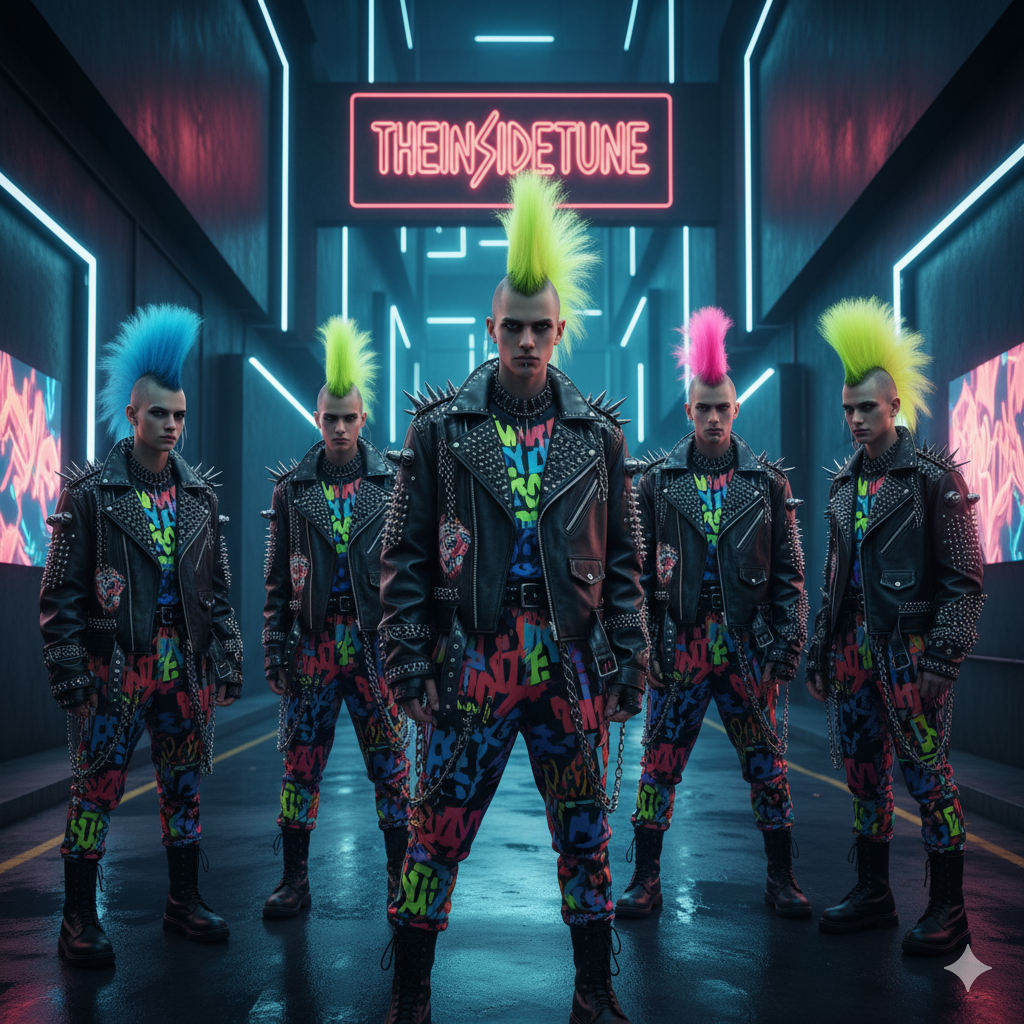🌍✨ Digital Fashion Europe 2025; Fashion Meets Technology in Europe 🚀🌟
Blending Creativity, Sustainability, and Immersive Experiences for a Global Audience”
The Dawn of a Digital Fashion 👗💻
Europe has always been the world’s style compass. From the dreamy haute couture streets of Paris 🇫🇷 to the luxury ateliers of Milan 🇮🇹, from London’s bold street-inspired designs 🇬🇧 to Berlin’s edgy underground creativity 🇩🇪—the continent has defined what fashion means for centuries. But in 2025, something truly historic is unfolding: the fashion stage has gone fully digital.
Fashion is no longer a spectacle reserved for the few sitting in gilded front rows. Thanks to immersive technology, the runway is now borderless. Anyone, anywhere, can experience the same magic—whether on a VR headset, through AR filters on their phone, or via interactive livestreams that let viewers shop instantly. 🌍✨
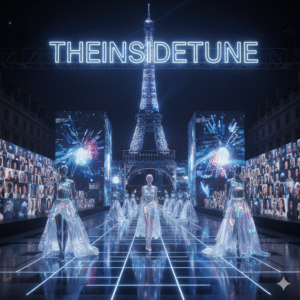
From Velvet Ropes to Virtual Reality 🚪➡️🕶️
The seeds of digital fashion weeks were planted years ago. When the pandemic forced fashion shows online, livestreams became a lifeline. At first, they were simple broadcasts—glimpses into what once was. But innovation rarely sits still. Soon came virtual catwalks, 3D collections, digital-only garments, and interactive platforms where audiences weren’t just watching—they were part of the show.
Fast forward to 2025, and Europe has turned this experiment into the new gold standard. No longer a compromise, digital fashion weeks are the way forward—sleek, interactive, sustainable, and globally accessible.
Why Europe Leads the Charge 🇪🇺 Digital Fashion era✨
It’s not surprising that Europe is the pioneer. After all, its fashion houses carry centuries of tradition, artistry, and influence. Yet instead of clinging to the past, European designers are embracing the future with open arms. They’re weaving AI-driven creativity, AR/VR runways, and blockchain-powered digital fashion into their shows—without losing the artistry and heritage that make European fashion iconic.
Think of it like this: in 2025, Paris still whispers elegance, Milan still screams luxury, London still rebels with edge, and Berlin still pulses with innovation. But now, they’re all doing it in a new language—the digital one. 💫
Beyond Style: The Bigger Promise 🌱🌟
Digital Fashion Week isn’t just about dazzling visuals or futuristic vibes—it’s about responsibility and inclusivity.
-
✈️ Sustainability: With less travel and waste, the fashion industry slashes its carbon footprint.
-
🌍 Accessibility: No matter where you live, you can now “attend” Paris or Milan’s fashion week.
-
🎨 Creativity Unleashed: Designers can play with impossible fabrics, gravity-defying outfits, and immersive backdrops that defy physics.
-
👥 Diversity: Digital platforms make space for new voices, independent designers, and diverse models who might not have had a chance on traditional runways.
A Teaser of What’s to Come 👀✨
This year’s Digital Fashion Week in Europe promises more than ever before. Expect:
-
👗 Virtual Runways that merge physical garments with AR overlays.
-
🤖 AI-powered styling assistants helping you shop the looks instantly.
-
🌱 Eco-conscious digital showcases proving fashion can be stylish and sustainable.
-
🛍️ Shoppable experiences where you can click and own the runway pieces in real time.
-
🎭 Immersive storytelling, where fashion is not just shown—it’s lived.
2025 isn’t just a step forward—it’s a redefinition of fashion itself. And Europe, with its unique blend of tradition and boldness, is leading the runway into a limitless digital future. 🌍✨
📜✨ The Rise of Digital Fashion Weeks: A Brief History
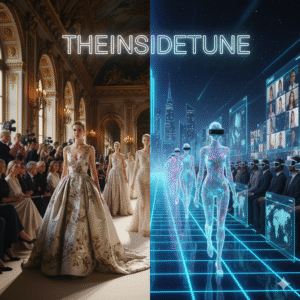
From Tradition to Transformation 🎩➡️💻
Fashion weeks once felt untouchable—grand, exclusive events where only editors, celebrities, and industry insiders held coveted front-row seats. Paris, Milan, London, and New York set the tone, and the rest of the world followed. But while these glittering showcases dazzled, they also carried a heavy footprint: expensive productions, global travel, and mountains of textile waste. 🌍💸
The digital shift wasn’t overnight—it was a ripple that turned into a wave. Early experiments with livestreams around 2010 offered glimpses of accessibility, but fashion remained mostly physical and exclusive. Then came 2020 and the pandemic, and suddenly the entire industry had to reinvent itself.
The Pandemic Catalyst 🦠➡️🚀
When the world went into lockdown, physical shows stopped abruptly. Designers faced an urgent question: How do you showcase fashion when the world can’t gather?
Out of necessity, virtual showcases were born. Designers like Balmain, Burberry, and Prada experimented with livestreamed runways, while independent creatives leaned into 3D design and augmented reality shows. The response? Mixed, at first. Some audiences missed the glamour of real-world fashion weeks, while others were intrigued by the inclusivity and innovation of digital.
But one thing was clear: there was no turning back. Fashion had unlocked a new dimension.
The Evolution of Virtual Shows 👗🕶️💫
By 2022–2023, brands began refining digital showcases:
-
3D models wearing digital-only garments appeared.
-
AR filters let audiences try on runway looks at home.
-
Hybrid shows combined physical runways with holograms and digital projections.
Fashion houses realized digital platforms weren’t just stopgaps—they were opportunities to expand storytelling and reach millions instantly.
Europe, with its heritage and cutting-edge design hubs, embraced the trend wholeheartedly. Paris experimented with holographic catwalks, London highlighted experimental digital designers, Milan fused craftsmanship with AR elegance, and Berlin went full-tech with immersive art-fashion crossovers.
The Birth of the Digital Fashion Week Movement 🌐✨
By 2024, the term Digital Fashion Week wasn’t just a trend—it was a movement. Dedicated platforms emerged, such as:
-
🌟 The Fabricant Studio (leading digital fashion house)
-
🛍️ DressX (digital-only clothing retailer)
-
🎮 Metaverse Fashion Council (curating global virtual shows)
For the first time, audiences could attend Paris Fashion Week from their living room, buy a dress as an NFT, or even wear digital couture in a video call. The exclusivity of fashion weeks dissolved into inclusive, global celebrations of creativity.
Why This History Matters 📖💡
Understanding the rise of digital fashion weeks shows us how fashion has always adapted. From photography replacing sketches, to television broadcasting runways, and now AI-powered AR experiences—fashion thrives on reinvention.
2025 marks the point where digital isn’t an experiment anymore—it’s the new tradition. Europe’s Digital Fashion Week stands as proof that innovation and heritage can blend beautifully, creating a future that’s stylish, inclusive, and sustainable. 🌱👗💻
🤖🕶️ Technology at the Heart of Fashion Weeks best of Digital Fashion
The Tech-Runway Revolution 💡👗✨
Fashion has always been about more than fabric—it’s about dreams, emotions, and storytelling. By 2025, the runways of Paris, Milan, London, and Berlin are no longer bound by physical limitations. Technology has stepped onto the catwalk as the co-creator of fashion experiences. From AI-curated model lineups to holographic stages that defy reality, Europe’s digital fashion weeks show us that the future of fashion is not just glamorous—it’s tech-driven, inclusive, and breathtaking.
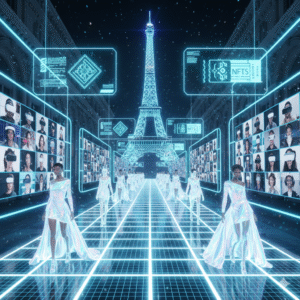
AI-Powered Model Casting: Inclusivity at Its Best 🧑🏽👩🏼🦱🧑🏻🦰
One of the strongest critiques of traditional fashion weeks was the lack of diversity. In 2025, AI is fixing this problem with elegance. 🌈
Imagine a runway where everybody feels represented:
-
AI-generated avatars showcase garments across all body sizes, ages, genders, and ethnicities.
-
Designers can test outfits on dozens of body types before the show, ensuring styles work in real life—not just on size-zero frames.
-
Representation becomes the norm, not a token gesture.
At last year’s Paris Digital Fashion Week, an AI-created model lineup included avatars with disabilities, plus-size models, and even silver-haired avatars celebrating ageless beauty. The audience cheered—not because it was a novelty, but because it finally felt like real fashion for real people. 👏
This shift isn’t just technical—it’s emotional. AI helps turn the runway into a mirror of society, giving everyone a seat at the fashion table.
AR & VR: Front-Row Access for the Whole World 🌍🎥🕶️
If you’ve ever dreamed of sitting front-row at Milan Fashion Week, 2025 makes it possible—without a plane ticket or VIP badge. Thanks to AR and VR, fashion has gone borderless.
-
AR (Augmented Reality): Imagine opening your phone, and with a tap, Prada’s new dress struts across your living room floor, perfectly to scale. You can zoom, rotate, and even “try it on” using AR filters.
-
VR (Virtual Reality): Put on a VR headset, and suddenly you’re sitting next to editors and influencers in Paris, turning your head for a 360° view of the runway. Backstage interviews, model rehearsals, and afterparties? You’re there too.
At London’s Digital Fashion Week 2024, Burberry streamed a VR experience where audiences from New York to Nairobi felt like they were in the same tent, watching trench coats glide past them. For the first time, fashion wasn’t just exclusive—it was global, inclusive, and participatory. 🌐
The beauty of AR/VR is that it doesn’t just broadcast fashion—it immerses you in it, turning passive viewers into active participants.
Digital Fashion; Spatial Computing & Holographic Stages 🌌👠🎭
If AR and VR let you watch fashion, spatial computing and holograms let you live inside it. Runways in Europe have become futuristic art stages.
Picture this:
-
In Milan, a luxury brand projects a holographic waterfall, with models walking as though water cascades around them. Not a drop is real—but the effect leaves jaws on the floor.
-
In Berlin, a show fuses fashion with digital art. Models walk through shifting virtual worlds—a forest, a neon city, a galaxy—without ever leaving the stage.
-
Paris experiments with holographic couture, where digital dresses transform mid-walk: sleeves stretch, fabrics glow, patterns shift in real time.
These spectacles prove that fashion isn’t just about what we wear—it’s about how we experience it. Spatial computing turns the runway into an immersive story, where every step feels like a scene from a movie. 🎬✨
Blockchain Tickets: Fashion’s Digital VIP Pass 🔗🎟️
What’s a fashion week without exclusivity? In 2025, exclusivity comes in the form of blockchain-secured tickets. These digital passes aren’t just entry tokens—they’re collectible treasures.
-
Each ticket is minted as an NFT (non-fungible token), making it impossible to fake.
-
Ticket holders unlock special perks: behind-the-scenes streams, designer Q&As, or even limited-edition digital wearables.
-
Fans treat them like fashion relics—imagine owning the NFT invite to the first-ever fully digital Paris Fashion Week.
European houses are leading here too. In 2024, Balmain released NFT tickets that doubled as digital art collectibles. They sold out in minutes, proving that fashion lovers crave not just clothes, but experiences they can own.
For the industry, blockchain ensures transparency and security. For audiences, it’s a way to feel like part of fashion history.
🛍️📲 Shoppable Fashion Shows: Where Runway Meets Retail
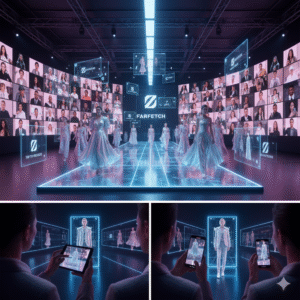
The End of Waiting Games ⏳➡️⚡
Remember the days when you had to wait six months before runway looks actually hit the stores? By the time they were available, fast-fashion chains had already copied them, leaving customers frustrated and designers scrambling. In 2025, Europe’s Digital Fashion Weeks have ended the waiting game with shoppable fashion shows.
Now, when a model struts down the digital runway in Paris or Milan, you don’t just admire the look—you can buy it instantly. One click, one tap, and the outfit is yours, either as a digital wearable for the metaverse or a physical delivery to your doorstep. It’s fashion without the lag.
See Now, Buy Now: Fashion at Your Fingertips 👗📱✨
The “see now, buy now” model has become the heartbeat of shoppable shows. Audiences watching a livestream can:
-
Tap on the screen to view outfit details.
-
Purchase directly without leaving the show.
-
Choose between physical pieces or digital-only versions (for AR filters, gaming avatars, or metaverse wear).
At Paris Digital Fashion Week 2024, Dior debuted a “tap-to-buy” feature during its livestream. Within minutes, their signature digital sneakers sold out—even though they weren’t tangible shoes, but NFT wearables for avatars in gaming platforms.
It’s not just about speed—it’s about creating an instant emotional connection between viewer and garment. The moment you fall in love with a look, it’s already yours. 💖
Digital Fashion: Fashion That Fits You 🪞🤳
Shopping online has always carried a risk: Will it fit me? Will it look good on me? In 2025, that uncertainty disappears with virtual try-on technology.
-
Using your phone’s camera or AR glasses, you can “wear” the outfit in real time.
-
AI adjusts for your body size, shape, and movement, giving a realistic preview.
-
Accessories like bags, shoes, and sunglasses also appear, completing the look.
At Milan’s Digital Fashion Week, Prada partnered with an AR platform to let audiences try on coats as models walked the holographic runway. Social media lit up with people posting their AR-fitted selfies wearing pieces from the collection—even before the show ended. 📸✨
This isn’t just convenience—it’s empowerment. Shoppers feel more confident, returns are reduced, and fashion becomes more personal than ever.
Integration With Big E-Commerce Platforms 🛍️🌐
Shoppable shows aren’t operating in isolation—they’re merging with the giants of online retail. By 2025, platforms like Zalando, Farfetch, and Net-a-Porter are fully synced with digital fashion weeks.
-
A Balmain dress seen on a digital runway in Paris instantly appears on Net-a-Porter’s store page.
-
Zara experiments with digital capsules that drop exclusively during livestreamed shows, available worldwide within minutes.
-
Luxury houses integrate with blockchain-based marketplaces, offering limited-edition NFTs alongside physical couture.
This fusion of runway + retail means that fashion weeks aren’t just cultural spectacles—they’re massive commercial events. Designers reach global customers instantly, and fans no longer watch passively—they shop, share, and wear in real time.
Why Shoppable Fashion Shows Matter 💡❤️
At its heart, this trend is about bridging inspiration and action. Fashion has always been emotional—you fall in love with a look, and you want it now. Shoppable shows give audiences that immediacy while giving brands:
-
More sales (fewer missed opportunities).
-
Fewer returns (thanks to AR try-ons).
-
Deeper engagement (viewers become buyers, not just spectators).
It’s a win for everyone. For consumers, it’s thrilling. For designers, it’s empowering. For the industry, it’s revolutionary. 🌍✨
Case Study: Gucci’s Digital-First Shopping Revolution 🐍👜✨
When it comes to blending heritage with innovation, few brands do it better than Gucci. Known for its bold designs and cultural edge, Gucci leaned into the digital revolution early—and by 2025, it’s setting the gold standard for shoppable fashion shows in Europe.
At the 2024 Paris Digital Fashion Week, Gucci stunned audiences with a hybrid runway: part holographic spectacle, part livestream commerce. As models (both human and AI-generated avatars) strutted in kaleidoscopic outfits, digital panels popped up on viewers’ screens with “buy now” buttons. Within seconds, fans from London, Berlin, and even Seoul were placing orders. 🛍️💻
But Gucci didn’t stop there. To tackle the age-old question of fit, they rolled out AR try-ons during the show:
-
Viewers could point their phones at themselves and see how a Gucci jacket draped across their shoulders.
-
Accessories like belts, sunglasses, and handbags appeared in real-time AR, allowing customers to mix and match instantly.
-
A limited-edition digital sneaker drop sold out in under 15 minutes—long before the show ended. 👟🔥
Gucci also integrated the event with Farfetch and its own app, meaning fans who missed the livestream could still shop directly from the recorded runway, complete with the AR features. The result? Record-breaking engagement, higher sales, and a brand that felt more connected than ever to its global audience.
Fans loved it too. For many, it wasn’t just about buying clothes—it was about being part of the show. Posting AR selfies in Gucci’s new collection became a viral moment on TikTok, blurring the line between audience and runway. 📸✨
Gucci’s case proves something bigger: shoppable fashion weeks aren’t just about speed. They’re about bringing fans into the story, making them co-creators in the magic of fashion.
Sustainability & the Digital Shift 🌿♻️
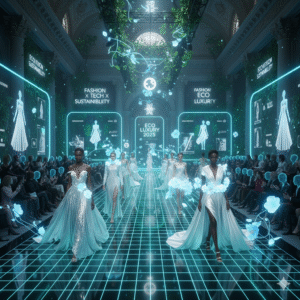
Fashion’s Green Turn in a Digital Age 🌍💚
One of the most exciting transformations at Digital Fashion Week 2025 in Europe is how technology is fueling a sustainable revolution. For years, the fashion industry has been criticized as one of the world’s biggest polluters—but now, digital innovation is helping rewrite that story. By moving from physical to digital-first practices, designers are proving that eco-consciousness can be just as glamorous as couture.
Cutting Down Waste Through Digitalization ✂️📉
Traditional fashion weeks often meant endless fabric samples, overseas travel for fittings, and show venues packed with energy use. Digital fashion flips this model:
-
Designers now create 3D prototypes instead of producing multiple physical samples that often end up wasted.
-
Virtual fittings with AI avatars replace cross-continent model castings, cutting down carbon-heavy flights.
-
Entire shows are hosted virtually, slashing the need for massive sets, lights, and wasteful resources.
The result? A fashion week with a lighter footprint that still feels futuristic and fabulous.
Digital-First Collections 🌐👗
Eco-conscious designers across Europe are now showcasing digital-first collections, where some garments only exist virtually. This means consumers can buy a dress, wear it on Instagram or in the metaverse, and never actually contribute to textile waste. 🌸✨
In fact, some luxury houses are using digital twins—a sustainable practice where every physical garment has a digital version. This allows shoppers to “try before they buy,” ensuring fewer returns and reducing clothing waste dramatically.
Virtual Garments as Sustainable Assets 👕💎
The concept of virtual fashion is no longer a gimmick—it’s an eco-strategy. Buying digital-only pieces means fewer natural resources, no shipping emissions, and no textile waste. Plus, digital clothes often become collectible assets tied to NFTs or blockchain, meaning they hold long-term value for both the planet and the consumer.
A new generation of consumers, especially Gen Z and Gen Alpha, is embracing the idea that sustainability doesn’t have to sacrifice style. Owning a virtual couture gown or streetwear hoodie for the metaverse is seen as just as prestigious as owning the real thing—sometimes even more so, because it comes with zero guilt. 🌱💫
Case Study: The Fabricant’s Eco-Fashion Philosophy 🌿✨
Dutch digital fashion house The Fabricant has become a trailblazer in this space. At the 2025 European Digital Fashion Week, they unveiled a fully digital, zero-waste collection inspired by ocean ecosystems. Instead of fabric, the designs were made of shimmering 3D-rendered “digital silks” and holographic materials that never touch a landfill.
What’s more, The Fabricant offered these garments as NFTs, allowing buyers to “wear” them in the metaverse or apply them onto their photos through AR. This not only reduced environmental harm but also created digital couture as an investment piece. It’s fashion that’s beautiful, futuristic, and sustainable—all at once. 🌊💎
🎨👗 Creative Experimentation with Digital Fashion
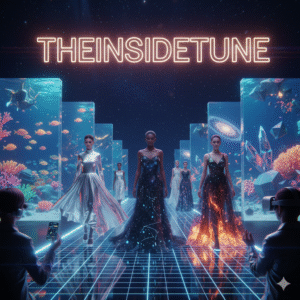
A New Playground for Designers 🖌️💡
Digital fashion has opened doors to a playground where imagination has no boundaries. Designers no longer need to be limited by fabric, stitching, or gravity itself. Instead, they can experiment with garments that glow, float, and morph in real-time — creations that could never exist in the physical world. Think flowing gowns made of galaxies, dresses crafted from liquid metal textures, or jackets that shift colors with every step. 🌌✨
This shift allows fashion to become more like art and storytelling, where each piece tells a bold narrative that can live both on runways and in virtual spaces like gaming, social media, or the metaverse. It’s fashion at its most creative, where the only limit is imagination.
Digital-Only Collections: Bold & Boundary-Breaking 🚀👠
By 2025, entire collections exist purely in digital form. These outfits aren’t produced for stores or warehouses but instead designed to be worn virtually in AR selfies, social media content, or digital avatars. Major luxury houses are now creating digital-first drops alongside physical lines, while independent designers thrive by catering to online-native fashion communities.
For young designers, this is revolutionary. They no longer need expensive materials, workshops, or mass production to showcase their art. With only a laptop and software, they can join global fashion conversations, build audiences, and even sell their work as NFTs or digital assets. 💻🌍
Physics-Defying Creations ✨🌪️
What makes digital fashion thrilling is its ability to push beyond the natural rules of design. Imagine dresses made of smoke, wings that unfold like butterflies, or skirts woven from beams of light. In virtual fashion shows, garments can shift mid-walk, allowing designers to showcase multiple looks in one design.
Younger, digital-first designers have become masters of this medium. Many of them started on platforms like Clo3D, Blender, or Unreal Engine and now lead the charge in creating daring, experimental looks that inspire both virtual and real-world trends. This experimentation is fueling an entirely new visual language for fashion.
🌍💫 Consumer Experience & Accessibility
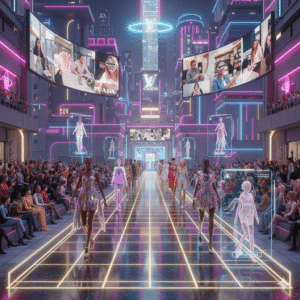
Fashion Weeks Without Borders 🌐🎥
Gone are the days when fashion weeks were exclusive spectacles reserved for celebrities, editors, and buyers. In 2025, digital fashion weeks are designed to include everyone. Whether you’re in Paris, Milan, or a small town in Asia or Africa, you can tune into livestreams, explore AR showcases, and even walk into metaverse venues to experience the runway in real time.
This shift has turned fashion into a global cultural celebration. Students, fans, and young fashion enthusiasts no longer have to dream about “someday attending a runway show” — now, they can log in and be part of it. 🎉💻
Inclusion of Students, Emerging Designers & Fans 👩🎓👗
One of the most beautiful aspects of digital fashion weeks is how inclusive they’ve become. Fashion schools can now showcase student collections on the same stage as global brands. Emerging designers get opportunities to collaborate, sell, or present their work without the overwhelming costs of a traditional runway.
And fans? They’re no longer spectators — they’re part of the ecosystem. Digital fashion allows consumers to try on garments virtually, style their avatars, or even co-create pieces alongside designers. It’s a two-way conversation, not a one-way performance. 🌟🤝
Community Engagement: Fashion Meets Social Media & Metaverse 📱🕶️
Fashion has always been about community and culture, and digital platforms have amplified this spirit. In 2025, fans engage with fashion weeks by posting AR selfies in the latest virtual collections, attending backstage Q&A sessions with designers in the metaverse, or even voting on which outfits brands should drop as physical pieces.
This new layer of interactivity transforms fashion into a shared experience. Instead of just watching models walk a runway, consumers are immersed — commenting live, creating fan edits, and becoming influencers in their own right. Fashion week is no longer just a show; it’s a digital festival of creativity, connection, and co-creation. 🎤💫
🇫🇷🇮🇹🇬🇧🇩🇪 Case Studies: Europe’s Fashion Capitals
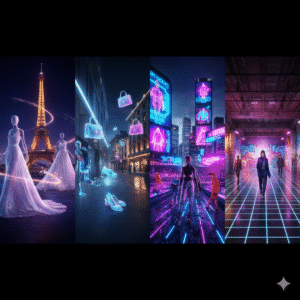
Paris: Haute Couture Goes Digital 👗✨
Paris has long been the epicenter of elegance and luxury, and 2025 shows it’s evolving beautifully. Digital couture here isn’t just about clothes — it’s about experiences, emotion, and storytelling. Imagine logging into a VR platform to walk through a virtual Grand Palais, where Dior gowns shimmer like liquid light and Chanel tweeds are animated to ripple with movement. 🌹💻
Haute couture goes beyond physical limitations: a gown may float mid-air, a cape might sparkle with virtual constellations, and intricate embroidery glows in augmented reality. Designers also use AI to personalize shows for audiences worldwide, highlighting pieces that match individual style preferences. The magic of Paris couture now reaches millions globally, making exclusivity accessible yet enchanting. ✨
Milan: Luxury Brands Embracing AR 💎🕶️
Milan thrives on luxury, craftsmanship, and innovation, and AR has become its signature tool. In 2025, top Italian brands like Prada, Gucci, and Dolce & Gabbana offer interactive runway experiences where you can virtually try handbags, shoes, or full outfits in your living room.
It’s not just a gimmick — it’s practical luxury. Shoppers can adjust virtual fabrics, see textures up close, and even visualize how a dress fits their body before committing. Milan proves that high-end fashion can be inclusive, interactive, and aspirational all at once, blending the tactile elegance of couture with cutting-edge digital convenience. 🕶️💫
London: Innovation & Youth-Driven Labels 🎨🌍
London has always been the playground of creative rebellion, and digital fashion amplifies this energy. By 2025, young designers leverage digital-only collections for the metaverse, AR filters, and gaming platforms. London’s digital fashion shows are a festival of experimentation: holographic jackets pulse to music beats, neon dresses react to avatars’ movements, and entire collections live exclusively online. 🎧✨
This city celebrates emerging talent and experimentation, giving students and new brands global visibility. Social media integration allows audiences to vote, comment, and even influence future designs. London is proving that digital fashion isn’t just about technology—it’s about creativity, inclusivity, and co-creation. 🌈
Berlin: Tech Meets Streetwear 💻👟
Berlin blends tech culture, urban energy, and streetwear like no other. Digital fashion weeks here often feel like interactive playgrounds: warehouses with holographic runways, graffiti-inspired AR backdrops, and live collaboration spaces for designers and fans alike.
Streetwear brands partner with tech startups to produce immersive experiences: attendees can co-create designs in real-time, test AR sneakers on avatars, or explore digital pop-up stores. Berlin’s approach is raw, bold, and culturally authentic — a perfect fusion of tech, fashion, and youth-driven energy. 🚀🌍
💼📊 The Business of Digital Fashion Weeks
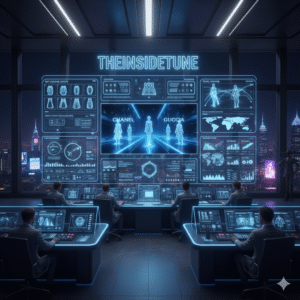
Sponsorship & Brand Collaborations 🤝✨
Digital fashion weeks are no longer just artistic showcases—they’re multi-industry ecosystems. Brands collaborate creatively with designers to create immersive experiences:
-
Beauty brands might launch AR makeup filters synced with runway looks.
-
Tech companies power interactive experiences or holographic shows.
-
Music labels collaborate with designers to create shows where visuals, beats, and clothing react in real-time. 🎶👗
Sponsorship isn’t about logos on banners anymore—it’s about integration into experiences, making the show richer and more interactive for the audience.
NFT Fashion Drops & Digital Merch 👗💎
NFTs have revolutionized fashion monetization. Designers now release limited digital garments that live exclusively online or in the metaverse. These pieces serve multiple purposes:
-
Collectibles: Fans own unique runway moments as digital assets.
-
Wearables: Avatars and AR selfies showcase the garments in social media and gaming platforms.
-
Revenue: Selling digital fashion creates new income streams without producing physical garments.
Luxury houses, like Balmain and Gucci, have seen instant sell-outs of NFT drops, proving that digital scarcity can be just as desirable as traditional couture. 🔥🛍️
Revenue Streams from Digital Tickets & Experiences 🎟️🌐
Digital fashion weeks offer tiered ticketing and premium experiences that expand revenue beyond physical attendance. Options include:
-
VIP digital passes granting access to backstage tours, Q&A sessions with designers, and AR try-ons.
-
Exclusive NFT or digital merchandise bundled with tickets.
-
Tiered memberships, from free livestreams to ultra-premium interactive experiences.
Brands now monetize engagement, access, and interactivity, turning digital fashion weeks into scalable, global events that attract both traditional fashion enthusiasts and digitally native audiences. 🌍💫
⚖️🔒 Challenges & Ethical Considerations in Digital Fashion
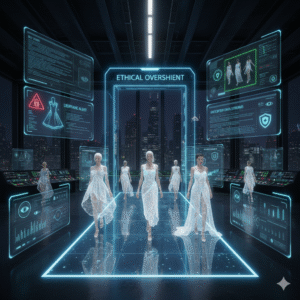
Protecting Data in a Virtual World 🛡️💻
Digital Fashion Weeks in 2025 offer immersive experiences, global access, and interactive features—but all this comes with sensitive data. When fans log in to try on virtual garments, attend AR shows, or purchase NFT fashion items, personal information such as measurements, location, and payment details is being collected.
Brands must strike a balance between personalized experiences and privacy protection. Strong encryption, transparent data policies, and consent-driven collection are essential. For example, European regulations, such as GDPR, now extend explicitly to virtual fashion environments, requiring designers and platforms to safeguard users’ digital identities. 🌍🔒
The Risk of AI Deepfakes in Fashion Media 🤖🎭
AI is a creative powerhouse, but it can also create challenges. Deepfake technology allows realistic manipulation of images and videos—meaning someone could fabricate models, garments, or runway shows that never actually existed.
This raises ethical questions:
-
Could a fake runway moment mislead consumers?
-
Could designers’ intellectual property be stolen or altered without consent?
-
How do brands ensure authenticity while embracing AI creativity?
To counter these risks, platforms now use blockchain verification, watermarks, and AI monitoring to maintain trust. Ensuring authenticity is critical not just for legal reasons but to protect the credibility of fashion brands and consumer confidence.
Accessibility vs. Exploitation ⚖️🌍
Digital Fashion Weeks aim to democratize fashion by including global audiences, students, and emerging designers. But this accessibility must be carefully managed. Over-commercialization, hidden paywalls, or exclusive NFTs could create barriers that exclude the very communities digital fashion seeks to empower.
Brands must ask: How do we innovate without exploiting our audience? The future of digital fashion will depend on ethical design and responsible engagement, ensuring everyone benefits from these revolutionary experiences.
Striking a Balance: Innovation with Responsibility 🌟🤝
At the core, the challenge of digital fashion is balancing technological innovation with ethical responsibility. AI, AR, and NFTs bring incredible creative possibilities—but they also require:
-
Transparent data use policies 🛡️
-
Protection against digital fraud and deepfakes 🖥️
-
Inclusion and accessibility for all audiences 🌍
-
Respect for intellectual property and designer rights 🎨
The brands that thrive in 2025 won’t just be the most tech-savvy—they’ll be the most trustworthy, ethical, and consumer-conscious, proving that innovation and responsibility can go hand in hand. ✨
🚀🌟 The Future Outlook: Beyond 2025
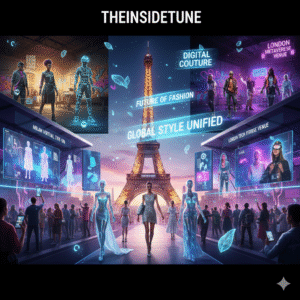
Blending Physical and Digital Fashion Weeks 👗💻
The future of fashion is hybrid. By 2025, we’re already seeing a shift toward blended physical-digital experiences. Imagine attending a runway in Milan while simultaneously logging into a VR platform to explore the same show from multiple angles, zoom in on garments, or try on virtual outfits.
This convergence allows brands to expand reach without compromising exclusivity. Designers can maintain the allure of physical couture while offering interactive, immersive experiences for fans worldwide. This blended approach also reduces environmental impact by minimizing travel and production waste, making fashion smarter, greener, and more inclusive. 🌱✨
The Rise of Digital Couture and Avatars 🕶️👾
Digital couture is set to explode beyond 2025. Entire wardrobes may exist only in the digital realm, worn by avatars in the metaverse, gaming platforms, and AR social media experiences. Consumers will increasingly invest in digital fashion as self-expression, not just novelty — avatars may sport signature designers in virtual concerts, workspaces, or social hubs.
Luxury brands are exploring avatar-first designs, where the garments interact with digital environments: skirts flutter in virtual wind, jackets reflect changing digital lights, and accessories respond to movements. This isn’t science fiction — it’s fashion evolving into experience and identity, letting creativity soar beyond physical limitations. 🌌💫
Europe as a Global Standard-Setter 🌍👑
Europe continues to lead the charge in defining global digital fashion standards. Paris, Milan, London, and Berlin collectively demonstrate how technology, creativity, and ethics can coexist. European fashion weeks are now benchmarks for innovation, influencing how North America, Asia, and other regions approach digital runway design, sustainability, and audience engagement.
This leadership is also about ethics and sustainability: by integrating blockchain verification, eco-conscious digital production, and inclusive access, Europe is showing the world that digital fashion can be responsible, equitable, and inspiring. 🌟💖
🖤👗 Conclusion: A New Chapter in Fashion History
Europe’s Leadership in Innovation 🌍✨
Digital Fashion Weeks in Europe have redefined what fashion means in the 21st century. From Paris’s luxurious digital couture to Berlin’s tech-infused streetwear, Europe is showing how creativity and technology can coexist beautifully.
Audiences now expect more than just a show — they want interaction, personalization, and immersive storytelling. Designers who embrace these tools are no longer just fashion creators; they’re experience architects, shaping how the world sees style, identity, and culture.
Balancing Creativity, Ethics, and Sustainability ⚖️🌿
The digital shift comes with great responsibility. Fashion in 2025 is as much about ethical innovation as it is about imagination. Designers must ensure:
-
Data privacy for global audiences 🔒
-
Authenticity in AI-generated designs 🤖
-
Sustainable practices for both physical and virtual production 🌱
When technology and creativity are aligned with ethics, fashion becomes a force for good — entertaining, inspiring, and conscious of its impact on people and the planet.
A Call to Embrace the Shift 💡❤️
For audiences, this is an invitation to step into the future of fashion. Explore digital runways, try virtual garments, support sustainable collections, and engage with designers globally. For brands, it’s a call to innovate responsibly, bridging artistry and technology.
Digital Fashion Weeks 2025 aren’t just shows — they’re a new chapter in fashion history, one where imagination meets reality, creativity meets technology, and the audience becomes part of the story. 🌟🖤


